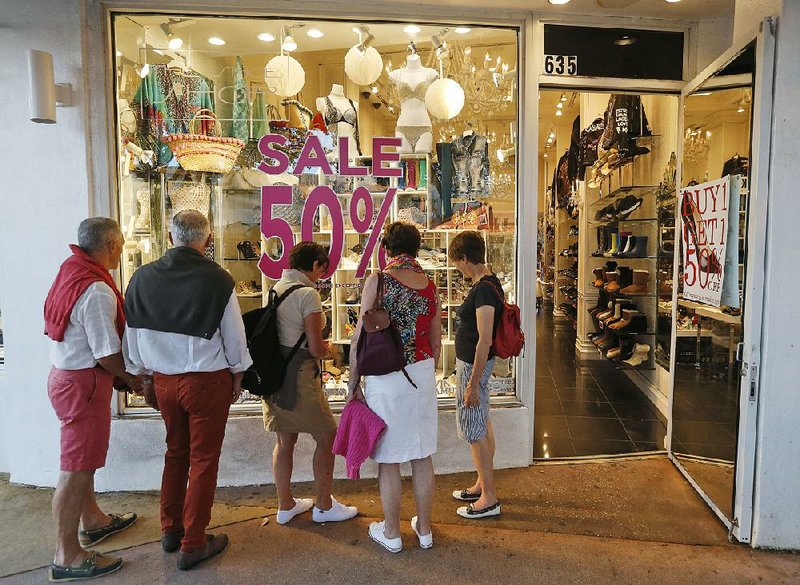WASHINGTON -- Americans in April stepped up their spending at auto dealers, hardware stores and e-commerce outlets as retail sales rebounded from two sluggish months.
The Commerce Department said Friday that retail sales increased 0.4 percent in April from March. Sales ticked up just 0.1 percent in March and fell in February.
The increase suggests that consumers are poised to spur faster growth in the April-June quarter after the economy barely expanded in the first three months of the year. Consumer spending, which also includes spending on services such as utilities, rose at its slowest pace in more than seven years in the first quarter.
The rise also indicates that the struggles of large retail chains, such as Macy's and J.C. Penney, reflect changes in consumer buying patterns more than broader economic weakness. Sales in a category that includes department stores, as well as general retailers such as Wal-Mart, fell 0.5 percent in April, the government said. Yet a category that includes online retailers reported sales growth of 1.4 percent, the strongest of any group.
"The retail sales data provide further reason to expect that overall consumption growth will be much stronger in the second quarter," said Andrew Hunter, U.S. economist at Capital Economics.
The sales gains were widespread, as Americans spent more at electronics and appliance stores, health care retailers, and sporting goods outlets. Sales fell at grocery stores and clothing merchants.
Americans ate out more, allowing spending at restaurants and bars to rise 0.4 percent. Auto sales rose 0.7 percent after falling in March.
Consumer confidence has soared since the presidential election, but spending hasn't increased as much as the jump in optimism would suggest. Last month's gain in retail sales was solid but not particularly strong.
Hiring has been steady, and the unemployment rate fell to a 10-year low of 4.4 percent in April. Yet average hourly pay rose just 2.5 percent over the past year. And inflation has ticked up, eroding most of that wage gain.
"The backdrop is generally favorable for consumers, with an unemployment rate of 4.4 percent, gradually improving wage pressures, low borrowing costs and high household wealth," Michelle Meyer and other Bank of America economists wrote in a note before the data was released.
The slowdown in consumer spending over the winter added to the woes of many retailers. On Wednesday, Macy's reported sharply lower sales and profits, causing a collapse in its share price.
Traditional retailers are suffering through their worst patch since the recession. More than twice as many stores have closed this year as at the same point last year. Bankruptcies are far outpacing last year's rate. Retailers cut jobs at the sharpest pace in seven years this spring, and they collectively could report the biggest drop in first-quarter profits since 2009.
Information for this article was contributed by Michelle Jamrisko of Bloomberg News.
Business on 05/13/2017
